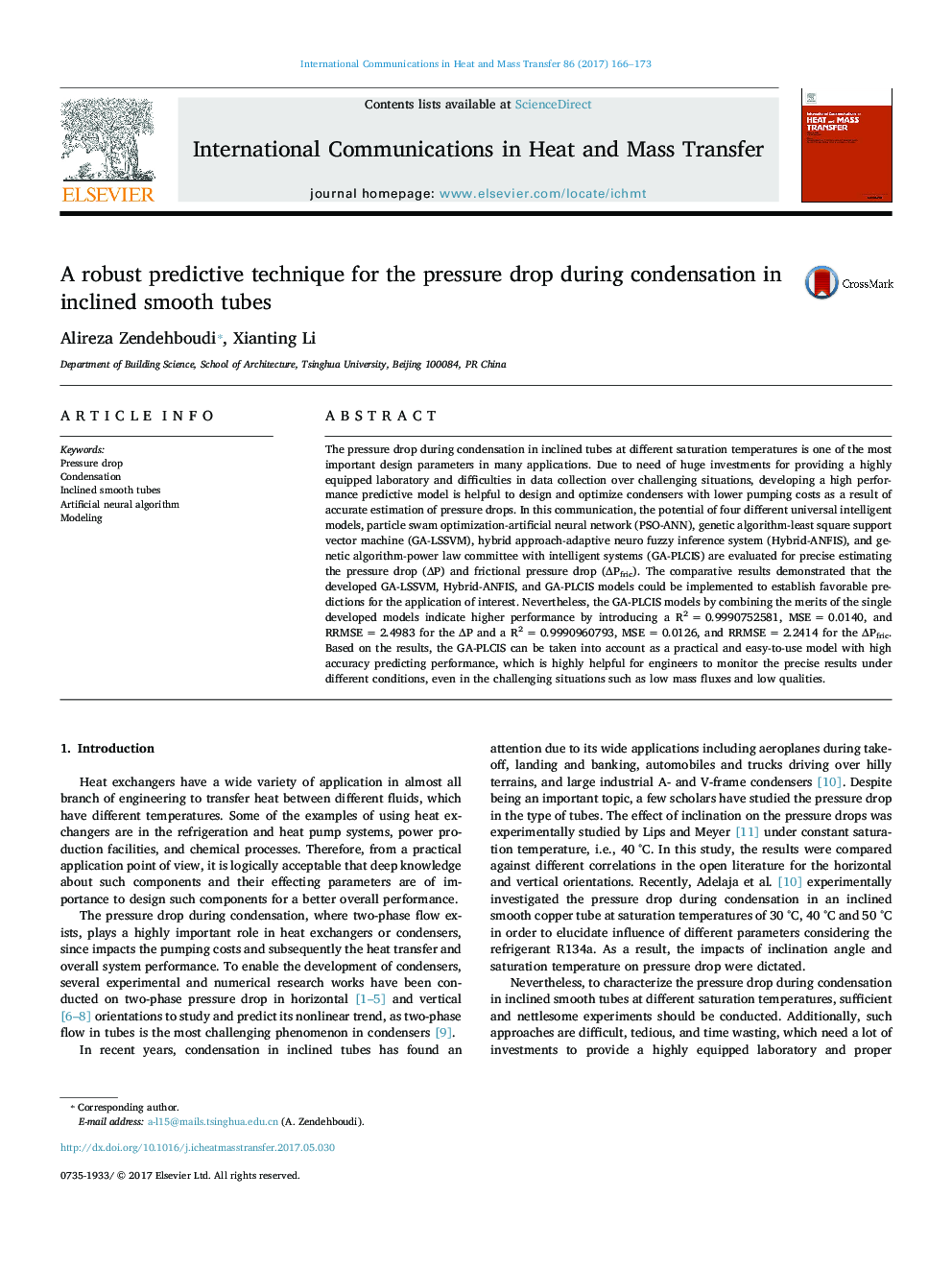| Article ID | Journal | Published Year | Pages | File Type |
|---|---|---|---|---|
| 4992862 | International Communications in Heat and Mass Transfer | 2017 | 8 Pages |
Abstract
The pressure drop during condensation in inclined tubes at different saturation temperatures is one of the most important design parameters in many applications. Due to need of huge investments for providing a highly equipped laboratory and difficulties in data collection over challenging situations, developing a high performance predictive model is helpful to design and optimize condensers with lower pumping costs as a result of accurate estimation of pressure drops. In this communication, the potential of four different universal intelligent models, particle swam optimization-artificial neural network (PSO-ANN), genetic algorithm-least square support vector machine (GA-LSSVM), hybrid approach-adaptive neuro fuzzy inference system (Hybrid-ANFIS), and genetic algorithm-power law committee with intelligent systems (GA-PLCIS) are evaluated for precise estimating the pressure drop (ÎP) and frictional pressure drop (ÎPfric). The comparative results demonstrated that the developed GA-LSSVM, Hybrid-ANFIS, and GA-PLCIS models could be implemented to establish favorable predictions for the application of interest. Nevertheless, the GA-PLCIS models by combining the merits of the single developed models indicate higher performance by introducing a R2Â =Â 0.9990752581, MSEÂ =Â 0.0140, and RRMSEÂ =Â 2.4983 for the ÎP and a R2Â =Â 0.9990960793, MSEÂ =Â 0.0126, and RRMSEÂ =Â 2.2414 for the ÎPfric. Based on the results, the GA-PLCIS can be taken into account as a practical and easy-to-use model with high accuracy predicting performance, which is highly helpful for engineers to monitor the precise results under different conditions, even in the challenging situations such as low mass fluxes and low qualities.
Keywords
Related Topics
Physical Sciences and Engineering
Chemical Engineering
Fluid Flow and Transfer Processes
Authors
Alireza Zendehboudi, Xianting Li,
